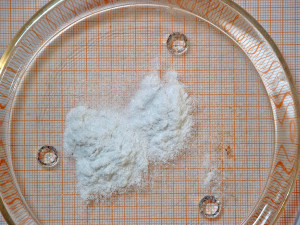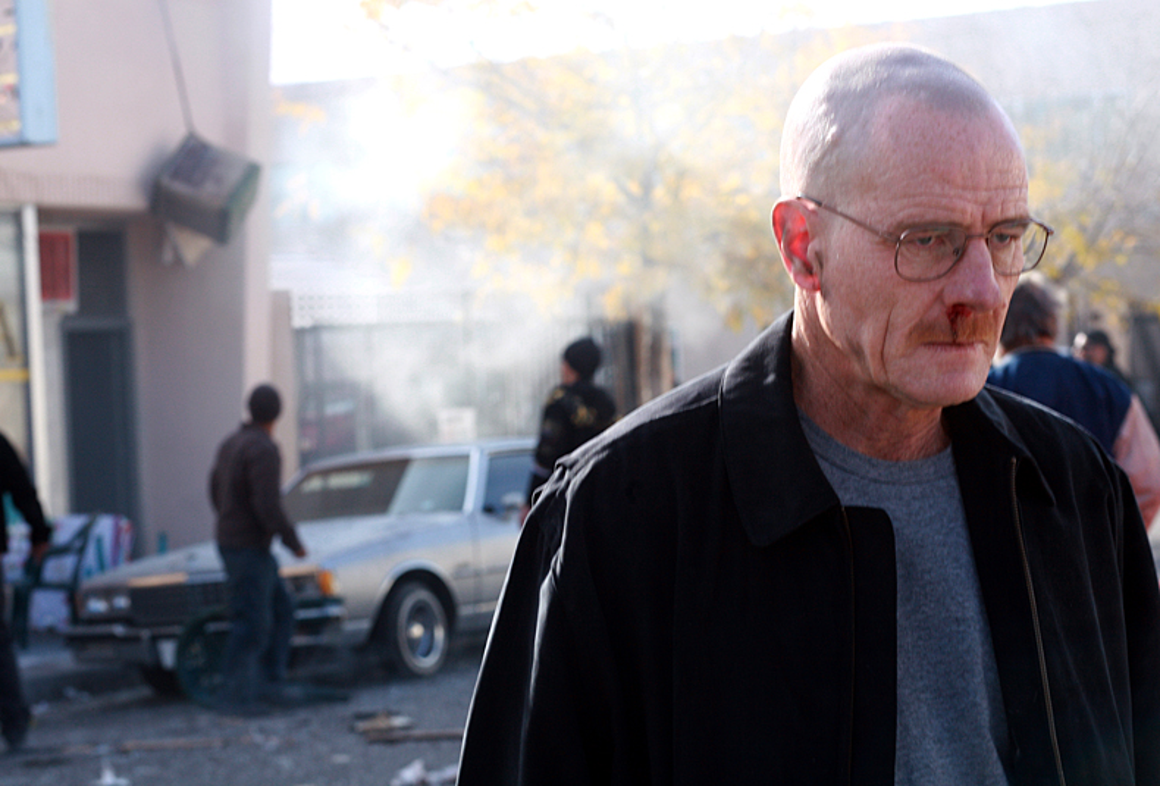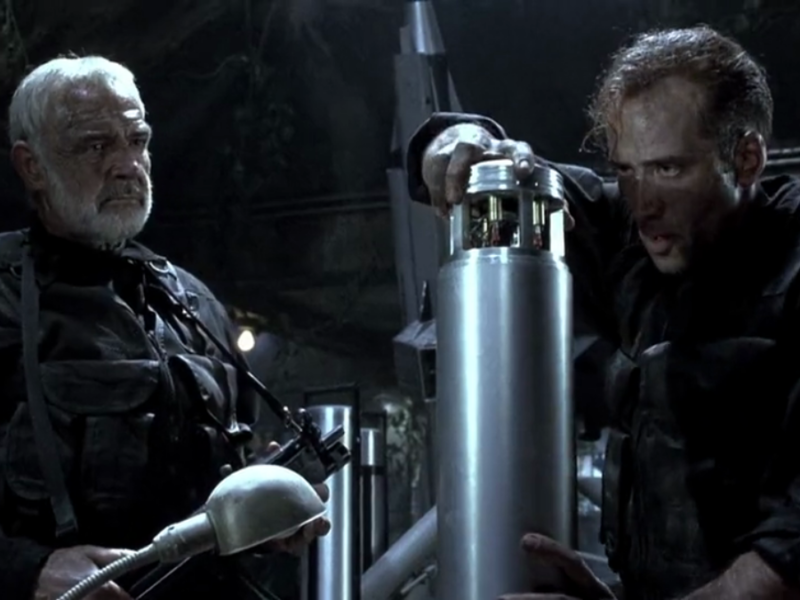Breaking Bad tells the story of Walter White (Bryan Cranston), a high school chemistry teacher, who is bored, boring and tragically middle aged. He is a logical thinker who seems to end up the loser in every situation. After being diagnosed with terminal cancer, he decides to make a drastic change to his life as he may leave behind his family with no financial security. Walter realizes, that with some assistance from a former flunked student turned petty drug dealer, Jesse Pinkman (Aaron Paul), he may be able to generate some serious cash by using his chemistry knowledge to "cook" meth-amphetamine.
Walter's bad-ass alter-ego "Heisenberg" comes to life in the 6th episode of season , "Crazy Handful of Nothin": Heisenberg is everything that Walt has always been too scared to be and although he may be lacking the muscle power and street credibility that other drug lords have, he makes up for this with some seriously impressive chemistry-based tricks. Walter finds himself in a nightmare situation when a crazy-violent drug lord, Tuco Salamanca (Raymond Cruz), steals a large quantity of his glass and beats his partner Jesse to near-death. In revenge, Walt uses the power of science to not only establish himself as a worthy associate within the drug world, but to claim back all of the money owed to him and Jesse.
He makes a batch of mercury fulminate that he is able to pass off as his glass. We see Walter explain earlier in the episode as an example how rapid chemical reactions can cause harmless substances to explode. Face to face with the drug lord, he states his requests: that not only does he want payment for the precious meth stolen, but also compensation for an injured Jesse. The skinny, bespectacled Walter White and his new bag of "meth" vs. a group of armed men prone to violence looks like a fight that will be over before it begins as they laugh in his face. After some dialogue, Walter takes a crystal of mercury fulminate from his bag and throws it onto the floor, resulting in an explosion that knocks everyone over...
Can a high school chemistry teacher create mercury fulminate that looks like crystals of meth? Can someone throw a small quantity of mercury fulminate to create such a big explosion? To consider whether this scene is realistic, we look into the properties of mercury fulminate.
What is mercury fulminate?

Mercury fulminate is an explosive compound with the chemical formula Hg(CNO)2. It can easily be prepared by dissolving mercury, a metal having the particularity of being liquid at room temperature, in nitric acid and then adding ethanol (commonly known as alcohol) into the solution. After a short time, a chemical reaction takes place and crystals are formed. Mercury fulminate is normally brewed to gray powder, but it can be obtained as a white product if a small amount of copper and hydrochloric acid is added to the reaction mixture.
Mercury fulminate contains a great amount of potential energy stored in its chemical bonds. When released, this energy creates an explosion that produces heat, sound, light and pressure. When dry, mercury fulminate is categorized as a primary explosive which means it is highly sensitive and can be detonated by a relatively small amount of energy such as shock or friction. However, in addition to weakening with time and being toxic, it is not considered to be the most efficient explosive and is mainly used as a detonator for less sensitive secondary explosives.
Mercury fulminate is usually used in its powder form (granular form) whereas crystals have higher sensitivities and are easier to detonate but are harder to make. Powder can be compacted in a way that assures better initiation properties. When higher pressures are used for compaction, a
phenomenon called “dead-pressing” can occur, leading to a material which loses it's explosive properties and only burns without detonation.
Can Walter White be able to prepare crystals of mercury fulminate and make them look like methamphetamine?
Yes; Making crystals of mercury fulminate is much more complex than just making the powder. Yet, none of the ingredients are hard to get and he has constant access to the high school lab to “cook” it. To get the white color, he would have had to add some copper and hydrochloric acid.
Would a crystal of mercury fulminate detonate when thrown?
Possible but unlikely; It depends on the force of the throw. The Mystbusters have investigated on mercury fulminate: They brewed mercury fulminate powder and tested its explosives properties in a pumpkin. They use a spark to detonate there sample of 5 grams and the resultant explosion blows the pumpkin. However, their study is incomplete to conclude on Breaking Bad science. Powder of the same primary explosive will behave differently from crystals.
In the case of the powder, striking is more effective than throwing: In a granular form, some of the initiating energy (i.e. impact energy) can be dissipated by the movement of particles along each other vertically when thrown on a surface. If Walter would have used powder, it surely wouldn't have detonated.
Crystals have better initiating properties than powder and throwing or striking doesn't make much of a difference as crystals are solids and its molecules are bonded. Crystals of mercury fulminate have a high shock sensitivity, but data from experiments are needed to estimate the exact amount of impact energy needed to trigger the detonation in those particular conditions.
Also, carrying a bag of mercury fulminate must have been very complicated for Walter as the movement of the bag creates friction on the crystals which could then initiate.
Would a single crystal of mercury fulminate create such an explosion that windows would break?
Probably not; The explosion in Breaking Bad is much bigger than the one from the Mythbusters when roughly the same amount is used. Even though powder is used by the Mythbusters, the difference wouldn't be that big. Even if mercury fulminate is considered as a good detonator (i.e. primary explosive), it's not a very strong explosive and the amount thrown by Walt is probably insufficient to create such a mess. If it was to explode this strongly, the entire bag of mercury fulminate would probably detonate as well, killing Walter in the explosion. Again, more data is needed to estimate the amount of potential energy released from the crystal in those particular conditions. With a more appropriate amount and the bag further away from the explosion, the scene would have seemed more realistic as the explosion could have created a strong enough explosion for the pressure wave to put everyone to the ground and break the windows.
So... thanks to his chemistry genius, Walt got his money back and a deal with the drug lord. The science he uses is real even though it is exaggerated to fit the plot. You can rest assured and keep dreaming Walter is or was your teacher in high school, Breaking Bad is not a completely unrealistic TV show where





